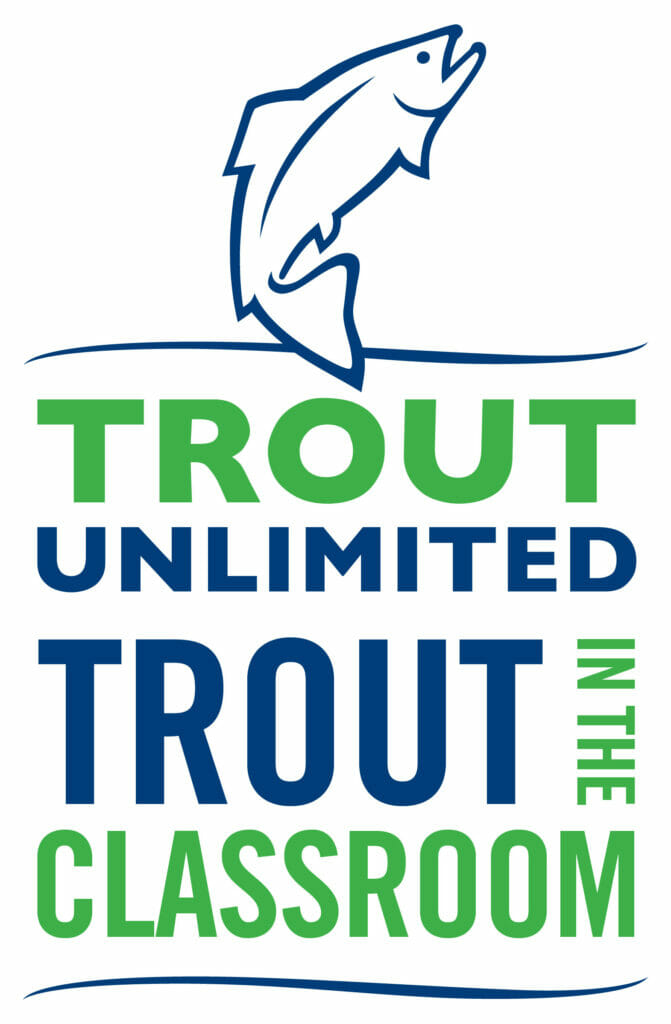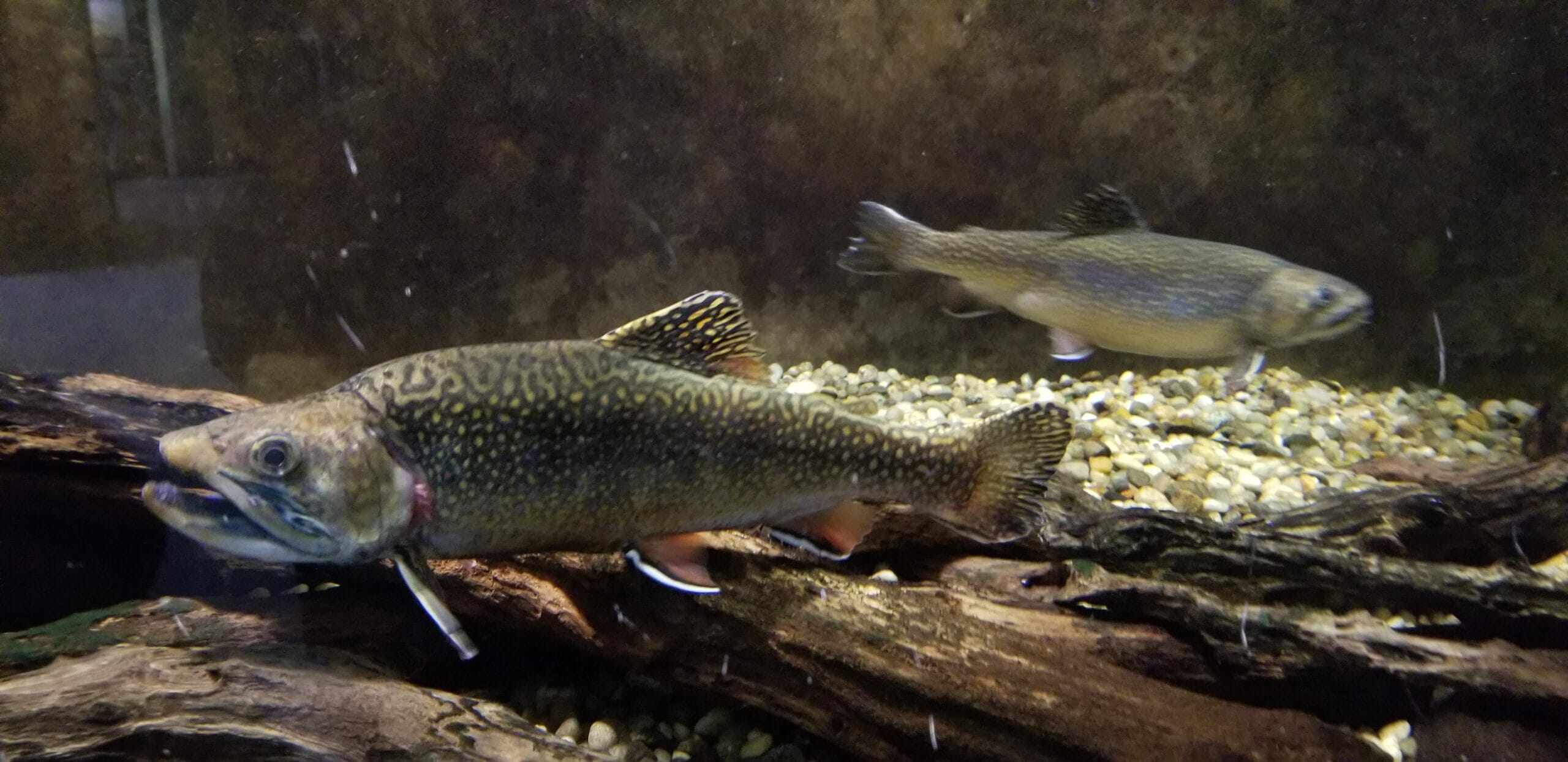And… why ammonia levels are important for trout survival

The trout in our virtual trout tank at the Trailside Museum are starting to feel the stress of the rising ammonia levels. Without a healthy bacteria colony in the tank, the nitrogen cycle will not work to neutralize the ammonia resulting in a high trout mortality. With daily 20 percent water changes, a filter cleaning and addition of bacteria supplements to the tank we are hoping for better test results next week.
Meanwhile we are starting fresh with new trout in the Ward Pound Ridge Reservation WPA gallery. This time we have brook trout! But why can’t we just host the new eggs with our fry in the Trailside Museum?
Common names can be quite misleading. Although brook trout (Salvelinus fontinalis) and brown trout (Salmo trutta) are both referred to as trout, they are actually two different genera (the plural of genus). While brown trout are closely related to Atlantic salmon, brook trout are actually a type of char (cold-freshwater fish). Like char, the brook trout has smaller scales that it’s salmon and trout relatives, and has a toothed vomer bone in the roof of the mouth (and yes fish identification to the species is extremely challenging).

And as much as it would be easier to host the two species in one TIC tank, brook and brown trout just can’t coexist. While brook trout are native to the upper Midwest and the East Coast of North America, brown trout were introduced to the continent by the U.S. Fish Commission in 1883 from Europe. With a size advantage, as well as tolerance to a wider range of water conditions, brown trout can thrive and take over brook trout habitat.
Additionally, brook trout spawn later in the season and so while our brown trout swimming around and looking for food, the brook trout are still waiting to hatch. Basically, brown trout see brook trout as food, not friend. So while both species currently exist in New York, our Department of Environment Conservation and TU members work hard to protect the precious and few remaining native brook trout streams.
Science Journal Question for TIC Students: What does the work taxonomy mean? What can we learn by looking at the taxonomy of different plants and animals?
Dive Even Deeper: What is native vs, invasive species? Why do you think brown trout were introduced to the United States? What are the pros and/or cons of introduced species?



